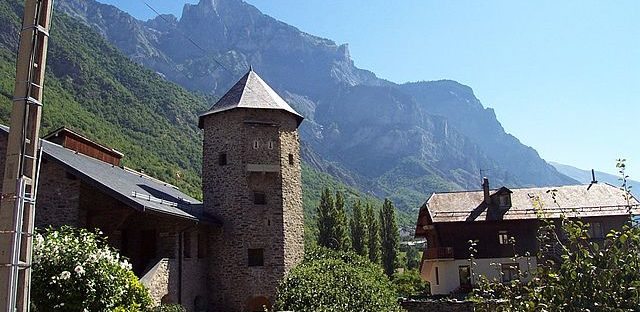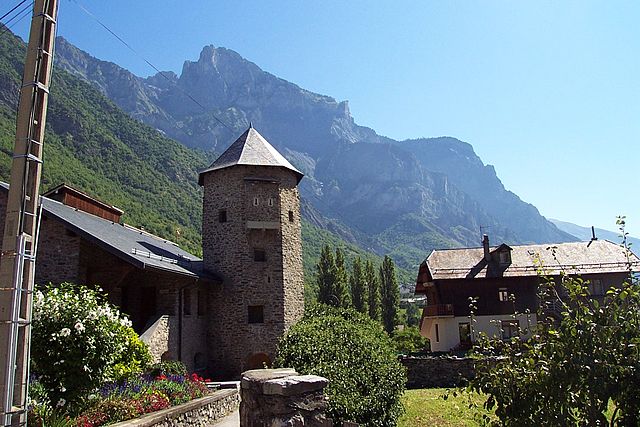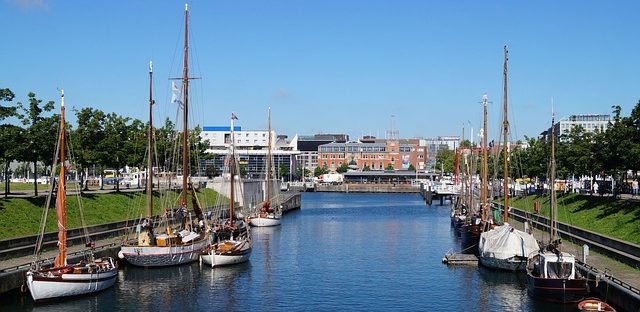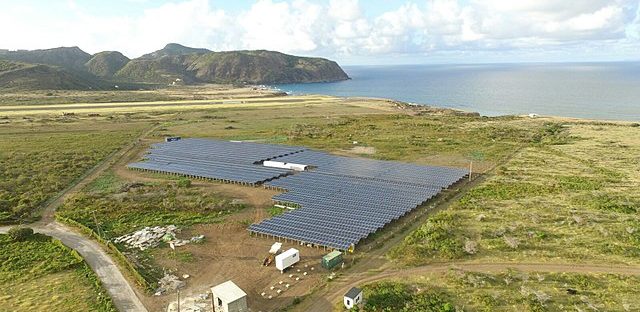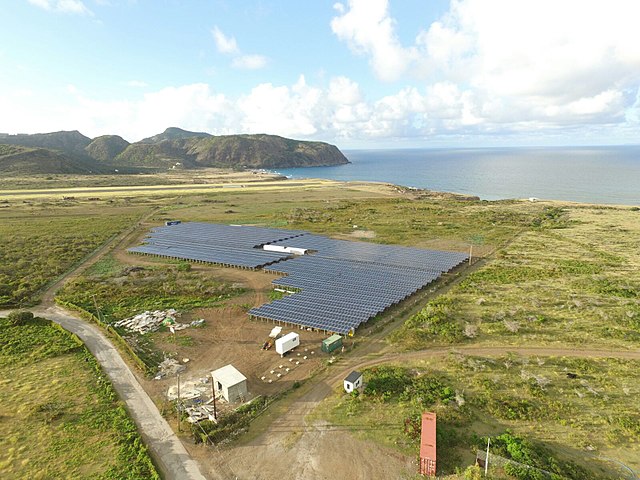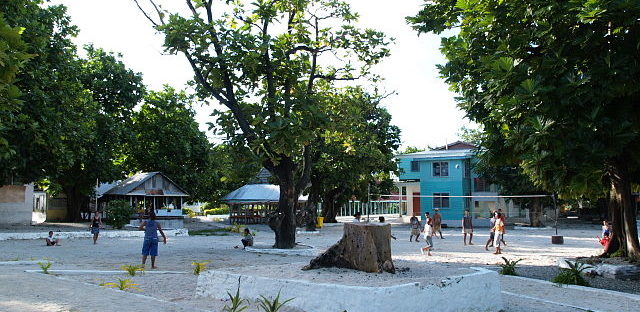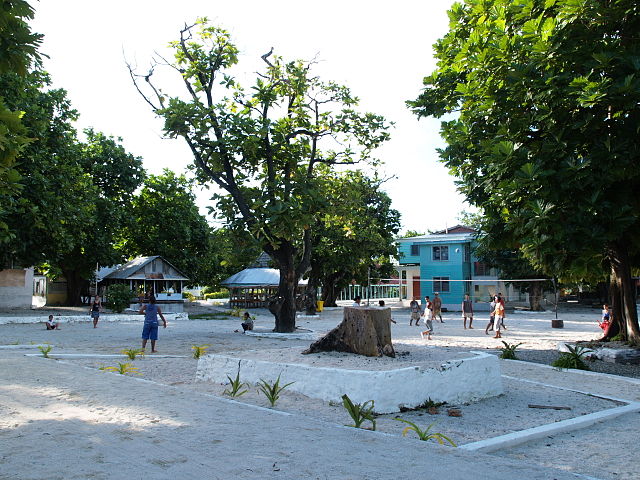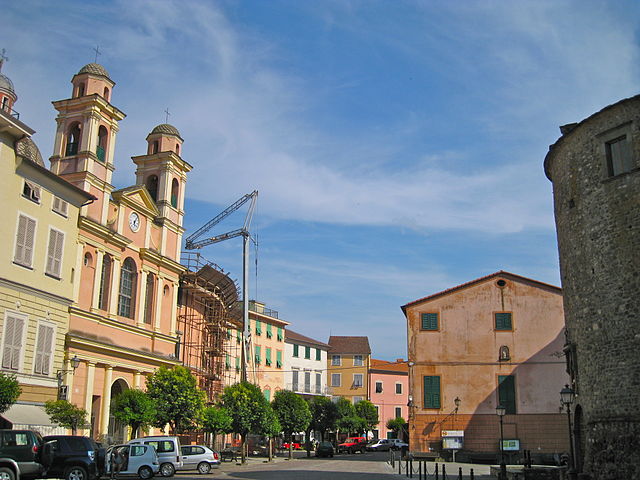- Target: 100% renewable energy
- Status: Achieved
- RES: A 2 MW hydro plant, several medium photovoltaic plants, and small localised solar thermal panels and wood heating systems.
- Implementation: The mayor of Saint-Julien-Montdenis Marc Tournabien was elected in 2008, and promptly turned towards implementing several renewable energy and energy efficiency projects. The municipality decided to join forces with the local utility to take action. Located in a mountain ski region, the deployment of new energy technologies has been readily embraced by citizens of this small village. In the last few years, the town has installed a 2 MW hydro plant and several medium photovoltaic plants. The local production exceeds the total electricity needs of the village by 150%. This has enabled the municipality to export energy to the regional association of towns Cœur de Maurienne which is now supplied with electricity from only renewable sources of energy. The current challenge is to tackle local electricity dispatching. Two projects are on-going: smart metering combined with load management and decentralised storage on batteries associated to PV units. Implementation was achieved due to the available competences that were made available, through the public-private territorial utility of SOREA. SOREA was created in 2007 which gathered small existing municipal utilities to develop hydro and solar projects. It was highly advantageous that the mayor of Saint-Julien-Montdenis is a member of its board, while its headquarters, a smart building at passive house standard, is also located in the village.
- Population: 1,632 (2014)
- Area: 33.04 km2 (12.76 sq mi)
- Link: PRODUCTION D’ÉNERGIE RENOUVELABLE
Tag: – Target Achieved
Samsø, Denmark
- Target: Move from a 100% RE island to a fossil free island by 2030
- Status: Achieved - Samsø is the world´s first island powered by 100% renewable energy. In progress - It is almost totally carbon free and uses 100% RE in all sectors except for transport.
- RES: Eleven land-based wind turbines and almost all heat production is powered by woodchips, straw and solar panels. The overall wind power generation is sufficient to offset the CO2 emissions of the private vehicles used on the island since all other vehicles (tractors, ferry-boats and government cars) use locally-produced biodiesel or are powered by renewable electricity.
- Implementation: In 1997, a competition for local communities and islands was launched to present plans for a 100% RE scenario. Samsø was the winner of the contest, being one of four islands and one peninsula that took part. The prize was a national fund to implement the island's renewable energy actions. A decade later, Samsoe generated more clean wind power than it consumed. The island´s energy model relies highly on participation by local citizens and businesses in the planning and implementation of RE projects. For instance, the wind turbines belong to the locals, resident associations or the city´s council. In 2006, the island established the Samsø Energy Academy in order to facilitate research and disseminate knowledge. In 2007, it was opened to the public and now it organizes exhibitions and workshops for politicians, journalists, and students from all over the world. The Samsø Energy Academy is a conference center used by companies, scientists and politicians to discuss renewable energy-related topics. Although the island is 100% powered by renewable resources, it still uses fossil fuels for local transport and heating. Therefore, the municipality has recently decided to move from a 100% RE island to a fossil free island by 2030, which includes transport on the island and to/from being free from fossil fuels.
- Population: 3,724 (2017)
- Area: 112 km2 (43 sq mi)
- Link: https://energiakademiet.dk
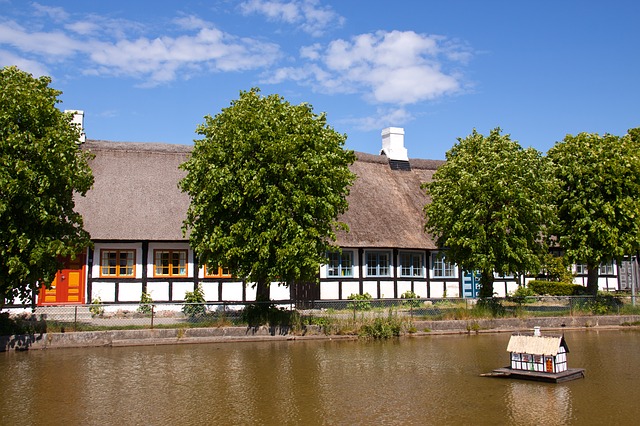
Schleswig-Holstein (State), Germany
- Target: 100% renewable energy
- Status: Achieved - 100% electricity supply from renewable energy in 2014.
- RES: Wind power, solar power and biomass.
- Implementation: The German Federal State of Schleswig-Holstein is located in the North of Germany at the border with Denmark. It was the first German federal state to achieve the 100% RE goal. It boosted its share in renewable energy within only eight years by 70%, starting from around 30% in wind energy in 2006. Today, Schleswig- Holstein covers its entire electricity demand with an energy mix from wind, solar power and biomass. It began in 2010 when the state’s energy policy formulated a target comprising a significantly higher share of renewable energy than 100% until 2020. In 2012, it was even announced that renewable energy would cover the annual gross electricity consumption of Schleswig-Holstein by a minimum of 300% in 2025. This was based on a potential assessment commissioned by the Schleswig-Holstein Ministry for Energy Transition, Agriculture, Environment and Rural Areas. By meeting this ambitious target, Schleswig-Holstein would not only account for 8% of Germany’s total annual electricity demand, but could also become an important exporter of green electricity. So far, concrete plans have been made in order to reach the 300% target, including the significant expansion of wind energy up to 10.5 GW on-shore and 2.6 GW off-shore. At the same time, solar power will be doubled up to 2.9 GW, while biomass-based energy production is only marginally increased.
- Population: 2,881,926 (2016)
- Area: 15,763.18 km2(6,086.20 sq mi)
- Link: (In german) http://www.schleswig-holstein.de/DE/Fachinhalte/K/klimaschutz/Downloads/Energiekonzept_2010.%20pdf?__blob=publicationFile&v=1
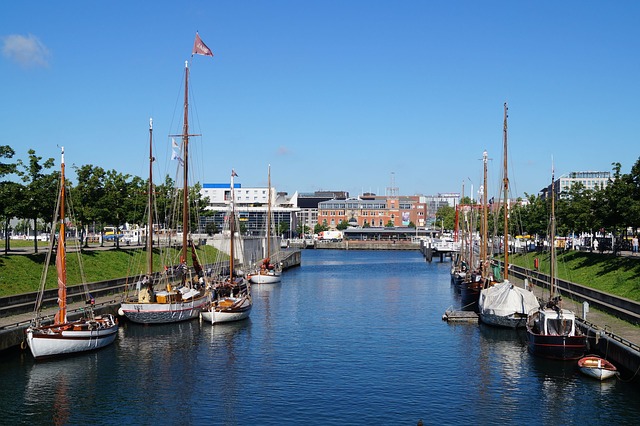
Scituate, Massachusetts, USA
- Target: 100% renewable power for the municipality by end of 2013.
- Status: Achieved
- RES: One wind turbine and a 3 MW solar array.
- Implementation: Scituate is a coastal town located between Boston and Plymouth in Massachusetts, USA. It achieve its target of 100% renewable electricity through local wind power and a 3 MW solar array, both constructed in 2012. The wind turbine was installed on town land through a joint venture between Palmer Capital and Solaya Energy. The town signed a 15-year contract to rent out the land and buy the electricity produced by the wind turbine. In June 2013, the wind turbine was hit by lightening, causing it to go offline and then run partially during repairs. Until that time, the wind turbine had produced 22,000 kWh of power. When the solar array was constructed in 2012 over the town's capped landfill, it provided the additional backup energy. The 30 solar PV systems provided a total capacity of 115.2 kilowatts. Today, the town has 3 electric hybrid municipal vehicles and has installed a charging station at its Town Hall. The wind and solar projects are projected to bring the town US$500,000 per year in revenue, and to provide Scituate with the ability to offset debt service for new construction.
- Population: 18,133 (2010)
- Area: 31.8 sq mi (82.4 km2)
- Link: https://www.scituatema.gov/community-profile-vision/pages/renewable-energy-plan-and-projects

Sint Eustatius, Caribbean Netherlands
- Target: Reduce fossil fuel usage and establish a grid stabilizing energy supply based on renewable energies.
- Status: Achieved - Produces 4.1 MW of energy, covering 45% of the islands annual energy share.
- RES: Combination of a 2 MWp PV farm and diesel generators, largest lithium battery storage system in the Caribbean, latest energy technology products, and monitoring platform.
- Implementation: The project was built by Eco Energy in collaboration with SMA and Schlepper. In 2016, 1.89 MWp of solar power and central storage batteries were first installed. The project began operations in March 2016. In the second expansion stage, the project partners doubled the solar output to 4.15 MW and increased the battery capacity to 5,900 kWh. The key component is the battery inverter with grid-forming characteristics which allows the diesel generators to be shut down fully automatically without affecting the stability of the frequency in the utility grid. A fuel save controller is responsible for real-time energy and power management and synchronizes diesel and battery operation. The system compensates for the PV array’s power fluctuations caused by fast-moving clouds in this region. This allows for the diesel generators to be switched off completely during the day. The system has withstood hurricanes Irma and Maria (September 2017). The EU has since earmarked 2.2 million euros to enhance the resilience of the electrical grid by placing around 10km of MHV cables underground. In 2017 the local government began working with a French energy company to explore geothermal energy production on the island.
- Population: 3,193 (Jan 2016)
- Area: 21 km² (8 sq mi)
- Link: https://www.sma-sunny.com/en/flagship-project-in-the-caribbean-pv-hybrid-system-on-the-island-of-st-eustatius/
Thisted, Denmark
- Target: 100% self-sufficiency in electricity supply from renewable sources.
- Status: Achieved
- RES: Wind power, geothermal energy, biogas, solar photovoltaics, and district heating.
- Implementation: The municipality of Thisted is located in the north-west section of Jutland region in Denmark. Today it is seen as a pioneer in the grassroots development of renewable energy based on decentralised energy. In fact, the successful transition towards 100% renewable electricity in Thisted was not the result of a political decision, but has its origins in the gradual expansion of private investments into the utilisation of renewable energy since the early 1980s. Today, all but one of the 252 wind turbines surrounding Thisted are privately owned. In total, 80% of Thisted’s total electricity demand is produced by wind power, while the remaining 20% are provided from biogas plants. Additional production of energy comes from privately owned solar power and geothermal plants that cover 85% of Thisted’s heating demand with renewables. Twisted is pursuing its energy goal based on an alliance of citizens, grassroots organisations and local companies, as well as the commitment of the municipal administration. The involvement of the community is particular key in providing the finance of the renewable energy systems. For example, many farmers have invested in wind power and these investments have paid off quickly, generating benefits after 6-7 years. Aside from the surplus energy that is sold and fed into the general grid, agricultural byproducts are able to be processed into bioethanol, biogas, or biopellets, constituting an additional energy supply from renewable sources. At the same time, Thisted’s citizens are saving one third of their energy costs for heating in comparison to oil-based heating systems. Thisted municipality has inspired innovation and has since established test centres for the development of new approaches in renewable energy production based on wave energy, as well as wind, solar and biogas. Moreover, the community plans to build a virtual power plant in order to be able to manage the decentralised energy supplies more efficiently, such as temporarily shifting the energy supply to the most economical production source.
- Population: 43,993 (2016)
- Area: 1,072 km²
- Link: Thisted Municipality
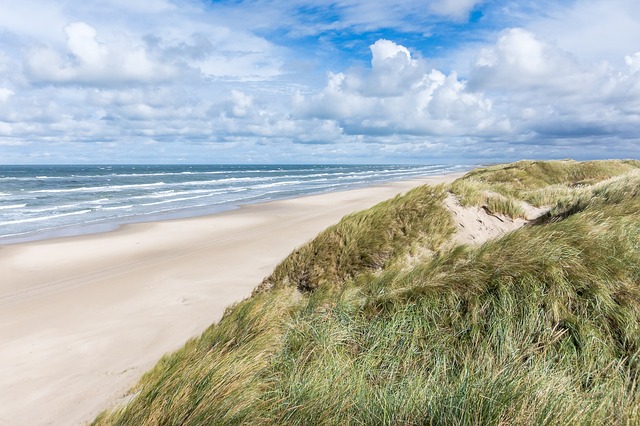
Tokelau
- Target: 100% renewable energy
- Status: Achieved
- RES: 1MW off-grid solar energy system across three main atolls of Tokelau. The project includes : 4032 solar modules, 196 string inverters, 112 DC charge controllers, 84 battery inverters and 1344 batteries in 48V banks. The system allows for up to 2 days of energy without any solar input.
- Implementation: Tokelau consists of three small coral atolls located about 500 km north of Samoa. It is a small island nation with limited land resources, fairly isolated, with only one form of transportation available and a very mobile population. Like many Pacific Island countries, it is heavily dependent on fossil fuels, especially diesel. The target was put in place in response to growing affects of climate change, and for its government to replace the use of fossil fuels with solar and bio-fuel to generate power on the island. An off -grid solar energy system is currently in operation, and was design and constructed, in collaboration with the local Tokelau community, by private companies and development organisations.
- Population: 1,499 (2016)
- Area: 10 km2 (3.9 sq mi)
- Link: The world's first truly renewable energy nation
Varese Ligure, Italy
- Target: 100% of renewable electricity.
- Status: Achieved - 100% of renewable electricity supply in 2001.
- RES: 4 wind turbines, and solar thermal systems.
- Implementation: In the 1980s, Varese Ligure and its surroundings suffered from unemployment and de-population. The number of inhabitants had significantly dropped from 6,000 inhabitants to 2,155 (2010). In response, Maurizio Caranza, the mayor at the time, established a plan to transform the town into a destination for green and sustainable tourism through increasing the share of renewable energy and organic food products to 100%. Today, there are four wind turbines surrounding Varese Ligure producing about 8 GWh annually, which is more than three times of the town’s total electricity demand. The surplus electricity is fed into the national grid generating around 25,000 euros per year. Varese Ligure also uses solar power to heat the local swimming pool and to cover the energy demand of the town hall building to 98% and the secondary school building by 62%. Additional 8 kW is generated through hydropower and the municipality is exploring the use of wood pellets for heating. Since the shift to renewable energy supply, the number of inhabitants have stabilised at around 2400. Unemployment decreased with the creation of 140 new jobs in the renewable energy sector. The municipality is benefiting from 350,000 euros tax revenues each year from the private operator of the renewable energy network, while the number of tourists have substantially increased. Besides renewable energy, Varese Ligure is supplying 98% of its food demand with organic products from 108 organic farms, applying environmental friendly technology for water purification and achieving significant reductions in waste and pollution.
- Population: 2,059 (2015)
- Area: 136.3 km2 (52.6 sq mi)
- Link: https://www.greenbiz.com/blog/2014/01/06/how-small-town-italy-became-model-sustainability
- In Italian
Wildpoldsried, Germany
- Target: 100% renewable energy
- Status: Achieved
- RES: Wind, solar, small-scale hydro, biomass, biogas, cogeneration and district heating.
- Implementation: Wildpoldsried is a small village in the district of Oberallgäu in Bavaria in southern Germany. The village has been recognized for its exceptional achievements in renewable energy production and in reducing its carbon footprint. It all began in 1997, when the community of Wildpoldsried began to construct a series of projects that produce renewable energy. The first efforts were wind turbines and biomass digesters for cogeneration of heat and power. In the time since, new work has included a number of energy conservation projects, more wind and biomass use, small hydro plants, photovoltaic panels on private houses, and district heating. Tied to this are ecological flood control and wastewater systems. Today, the impact of measures has resulted in the construction of nine new community buildings, including a school, and community hall, complete with solar panels. There are three companies operating four biogas digesters. There are nine windmills. One hundred and ninety private households are equipped with solar, which pays them dividends. The district heating network has 42 connections. There are two small hydro power plants. Wildpoldsried now produces 469% more energy than it needs and is generating 4.0 million Euro in annual revenue. At the same time, there has been a 65% reduction in the town’s carbon footprint.
- Population: 2,567 (2017)
- Area: 21.35 km2 (8.24 sq mi)
- Link: (In German) https://www.wildpoldsried.de/index.shtml?Energie
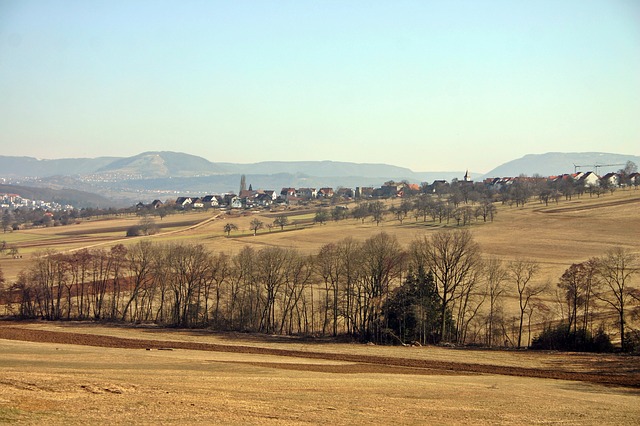
- German
- German
Wolfhagen, Germany
- Target: 100% RE electricity supply by 2015.
- Status: Achieved
- RES: Windpark, a biomass and biogas plant, a small household RE systems.
- Implementation: Wolfhagen is a small, idyllic German town, located in the Kassel District of the Federal State of Hesse. Its 100% RE achievement was a response to an increasing number of energy mandates and expenditures faced years earlier. By adopting an RE strategy, it was able to eliminate its dependence on fossil fuels and external energy suppliers, and keep revenues within the region which benefit its citizens directly. RE has also helped create many new jobs in the town. An important milestone for the city's energy transition was reached in 2003 when the council decided to buy back the electricity grid. The decision led to the “remunicipalization” of the grid by the municipally owned utility, Stadtwerke Wolfhagen. In 2008, Stadtwerke organized an excursion to a wind farm for representatives of all local political parties and less than four weeks later the sitting council officially adopted the 100% RE target. A broad participatory process was launched by the municipal administration with several stakeholders from the local forestry industry and businesses, as well as with conservationists. In 2012, in keeping with the political commitment to ensure citizens directly benefit from RE investments, the citizen-based energy cooperative BürgerEnergieGenossenschaft Wolfhagen was founded. By that time, the German Renewable Energy Act, the national legal framework, enabled rapid realisation of RE projects. Wolfhagen's RE strategy is centered on Windpark Rödeser Berg and Solarpark Gasterfeld, a biomass and biogas plant owned by local farmers, and many private household production systems. The local citizen energy cooperative holds a 25% share in the municipally owned utility Stadtwerke Wolfhagen. This partnership between cooperative and municipal utility fosters democratization of energy production and fair distribution of benefits. Harmonizing supply with demand remains a key focus in Wolfhagen's RE strategy. The town aims to establish a smart network that links households to the municipal utility which would optimize household devices, for example, at times when a lot of wind and sun energy is transmitted to the grid. It allows Stadtwerke Wolfhagen to send signals to households to start up and take advantage of lower-priced wind and sun-generated electricity. A pilot project of 35 households is underway with the intention of developing an evidence-based business model.
- Population: 13,121 (2017)
- Area: 111.95 km2(43.22 sq mi)
- Link: How a small town reclaimed its grid and sparked a community revolution
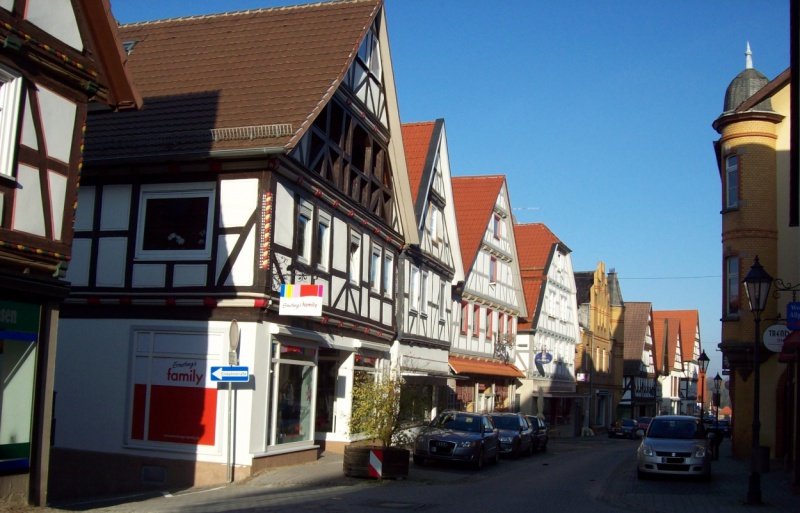
- © Günther Pöpperl
- In German
- In German
